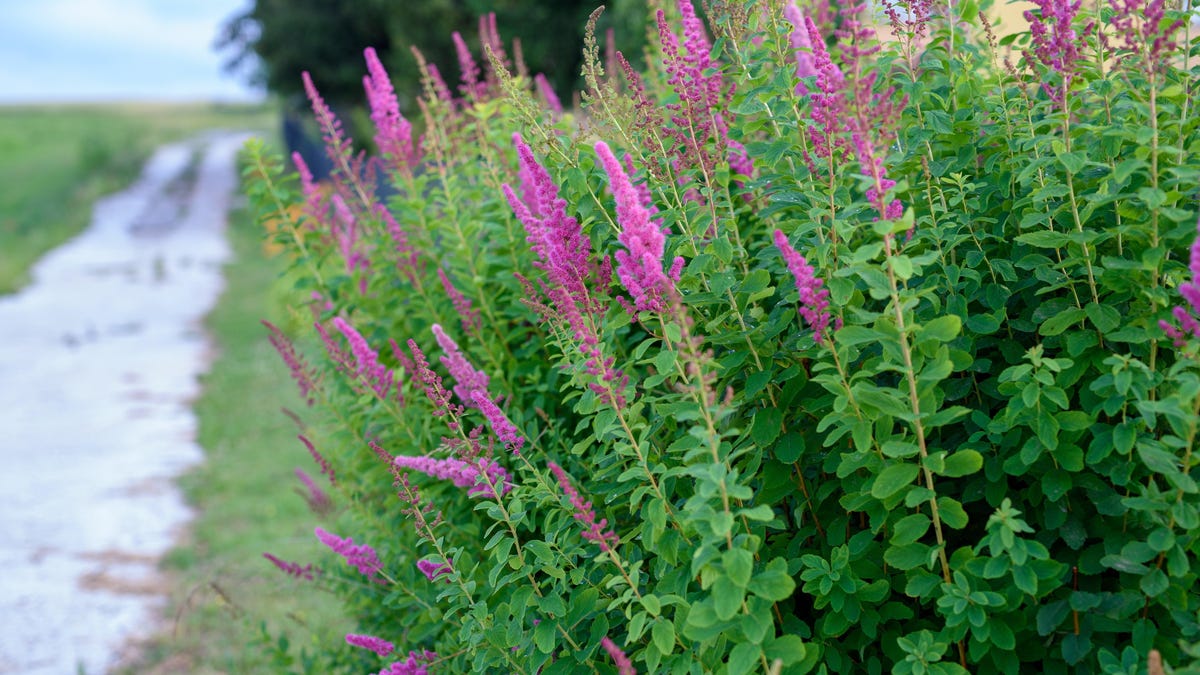Stop Planting Those Invasive Butterfly Bushes

Although butterfly bushes don’t need much water and produce beautiful flowers, they also have a downside. In many places in North America, some species of butterfly bushes (Buddleia) are invasive. They can sprout just about anywhere, including on buildings and sidewalks, and they have no local foes to keep them in check.
There are some species of Buddleia that are safe to plant, while others are invasive and can grow in your yard, sidewalk, and driveway. Here’s how to tell the difference and why you should follow the warnings.
The Real Harm of Invasive Butterfly Shrubs
The most commonly banned invasive shrub butterfly type is Buddleia davidii, which has been declared invasive along much of the East and West coasts of the United States, as well as England and New Zealand. The seeds of the species are dispersed by the wind, and once they start spreading, they become very difficult to control. A hardy bush will also re-grow and form new plants if you cut it at the base. In some places, the fast-growing shrub has even been known to damage public infrastructure, such as railroad tracks.
Butterfly bushes that are safe to plant
There are some species of Buddleia that have been bred for infertility, making them unable to produce viable seeds. These varieties are safe to plant, which is great because they attract butterflies and other pollinators, and they will bloom all or most of the summer, depending on the variety. Seedless cultivars of the bush moth include:
- blue chips
- Blue Chip Jr.
- Pink Micro
- asian moon
- Miss Molly
- Miss Pearl
- Miss Ruby
Some native butterfly bushes can be safely planted
There are several varieties of butterfly bushes that are native to North America and are safe to plant in some areas, given the size and spread of the adult plant. These include the Orange Woolly and Utah butterfly bushes. They usually live in Nevada, Arizona, Utah and California. If you’re not sure about a particular type of butterfly bush, it’s a good idea to check your state or local university’s horticulture to make sure you’re not going to populate the entire area.
Consider other butterfly-friendly plants.
While butterfly bushes do attract butterflies, other plants can help too. If your goal is to create a butterfly garden, you should also have local milkweed, mallow, or wild violet, as well as shelter plants such as spice and wisteria. There are many more native plants for each region that you can find on the National Wildlife Federation website. If having a butterfly bush is too controversial for you, there are plenty of other flowering shrubs to choose from that won’t spark controversy about invasive species on your doorstep.
What to do if you find an invasive bush butterfly
If you do find an aggressive butterfly bush in your yard, you can prevent it from spreading by aggressively pruning the flowers before they set seeds. Cutting the flowers before they dry will prevent the formation and spread of seeds.
If you want to remove a butterfly bush, you need to dig deep and wide around the root ball and remove the whole thing (or as much of it as you can) to avoid re-sprouting. If you live in a place that has been declared an invasive butterfly bush, you can contact your state or local university to find out how best to deal with it.